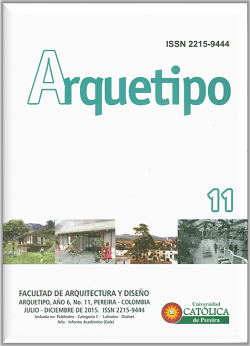Relation ship between creative environment and creative team on the Coffee Cluster Aeronáutico
Keywords:
Organizational creativity, co-working team, environment and innovationAbstract
Aeronautical Cluster Eje Cafetero, especially characterized by its high innovative character, CLARE has been integrated into the value chain in the aerospace sector in the framework of the policy of technological independence promoted by the Colombian Air Force. Therefore, the CLARE is presented as a field of study where it is possible to establish the relationship between the creative environment and creative team, because although they have been intentionally developed equipment and their environments, they have not been diagnosed or evaluated. The focus of this research is quantitative, descriptive and correlational crosssectional and sample of 11 companies belonging to the cluster. The results indicate that among the creative environment and creative team exist a direct, positive and highly significant correlation, which is based on the direct involvement of creative teams at innovation practices assumed as part of the organizational system and the net that they built.
References
Amabile, T. (2000). Cómo matar la creatividad. En: Harvard Bussines Review (ed.), Creatividad e Innovación (pp. 1-31). Bilbao: Ediciones Deusto.
Amabile, T. M. (2013). Componential Theory of Creativity, to appear in Encyclopedia of Management Theory (Eric H. Kessler, Ed.).
Amabile, T., Conti, R., Coon, H., Lazenby, J. & Michael, H. (1996). Assessing the work Enviroment for Creativity. The Academy of Management Journal, 39(5), 1154-1184.
Angel, R. (2006). Putting an innovation culture into practice. Ivey Business Journal, 70(3), 1-5.
Aznar, G. (1974). Creatividad en la Empresa. Barcelona: Oikos tau sa.
Betancourt, J. (2006). El entorno Creativo. En: V. Vilant y S. De la Torre (eds.), Comprender y Evaluar la Creatividad (pp. 197 - 204). España: Aljibe.
Bornay, M. B. (2013). ¿Qué hace a los equipos ser más innovadores?: El liderazgo desde una perspectiva de autodominio. Sevilla; Cuadernos de Economía y Dirección de la empresa, 41-53.
Cámara de Comercio de Pereira (2015). Informe de Coyuntura Económica de Risaralda. Pereira: Autor.
Dabdoub, L. (2006). Evaluar el ambiente creativo en las organizaciones. En: S. De la Torre y V. Violant, Comprender y Evaluar la Creatividad: Cómo investigar y Evaluar la Creatividad (Vol. 2, pp. 613-624). Málaga: Aljibe.
De La Torre, S. (2006). Comprender y Evaluar la Creatividad. Un recurso para mejorar la calidad de la enseñanza. Volumen 1. Málaga: Aljibe. Forehand, G. (12 de junio de 2001). Definición del clima laboral. España.
García, J. (2002). Creatividad: La Ingeniería del Pensamiento. México: Editorial Trillas.
Gonçalves, A. (2002). Dimension del clima organizacional. Disponible en http: www.geocities.ws/janethqr/liderazgo/130.html
González, C. (2002). Dimensiones ambientales para la gerencia creativa. Posturas de algunos autores. Módulo Gestión creativa. Manizales: Universidad Nacional.
González, C. (2012). Círculos creativos para la innovación y el trabajo en equipo. Grupo interuniversitario de investigación en creatividad. Caldas. Manizales: Universidad Nacional.
OCDE (2006). Manual de Oslo: Guía para la recolección e interpretación de datos sobre innovación (Tercera Edición). Madrid: Grupo Tragsa.
Ruiz Seisdedos, S. (2008). De la teoría y praxis (realidad) de la cooperación descentralizada: Analisis de tres estudios de caso. Montevideo: Observatorio de Cooperación Descentralizada.
Sampieri, R. y Baptista, P. (2010). Metodología de la Invetigación (Quinta Edición). Mexico: Mc Graw Hill.
Woodman, Sawyer & Griffin. (1993). Toward a Theory of Organizational Creativity. Academy of Management,18(2), 293-321.

